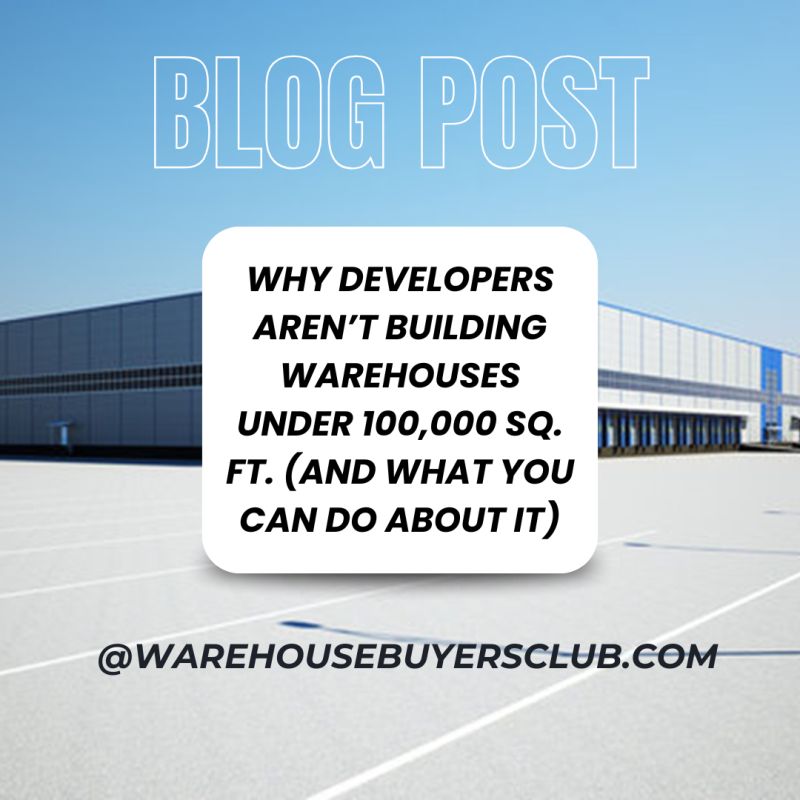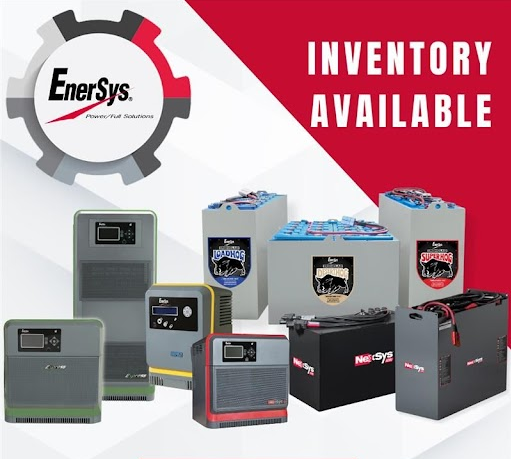𝐖𝐡𝐲 𝐃𝐞𝐯𝐞𝐥𝐨𝐩𝐞𝐫𝐬 𝐀𝐫𝐞𝐧’𝐭 𝐁𝐮𝐢𝐥𝐝𝐢𝐧𝐠 𝐖𝐚𝐫𝐞𝐡𝐨𝐮𝐬𝐞𝐬 𝐔𝐧𝐝𝐞𝐫 100,000 𝐒𝐪. 𝐅𝐭. (𝐀𝐧𝐝 𝐖𝐡𝐚𝐭 𝐘𝐨𝐮 𝐂𝐚𝐧 𝐃𝐨 𝐀𝐛𝐨𝐮𝐭 𝐈𝐭)
If you’ve been trying to find a new warehouse under 100,000 square feet lately, you already know—mission impossible.
At Warehouse Buyers Club, I speak with operators, 3PLs, manufacturers, and local distributors weekly who are desperate for the same thing: a functional warehouse between 20,000 and 80,000 square feet in a good location. They don’t need a million square feet, but they need something now, and it’s just not out there.
So, why aren’t developers building these mid-size and smaller warehouses anymore? Let me pull the curtain back on the industry logic—and then I’ll share what you can do to find these elusive properties in today’s red-hot industrial real estate market.
Why Developers Avoid Sub-100K Sq. Ft. Warehouses
Here’s the truth: it’s not personal—it’s economics. Developers are in this game to make money, and the math for smaller warehouses just doesn’t pencil out like it used to.
1. Land Costs Are Sky High
In most industrial hot zones—think Dallas, Atlanta, Inland Empire, Central PA—land is at a premium. It costs almost the same per acre whether you're building 50,000 or 500,000 square feet. So naturally, developers maximize footprint and density to boost returns.
2. Construction & Compliance Costs Don’t Scale Down
The fixed costs of site prep, permitting, environmental studies, and modern building requirements (like ESFR sprinklers, 32’+ clear height, trailer parking, etc.) don’t scale down much with smaller buildings. Whether it’s 50,000 or 500,000 square feet, many of those expenses are nearly the same.
3. Capital Is Chasing Scale
REITs and institutional investors want yield and scale. Big-box tenants, long-term leases, and large logistics operations are more attractive to them than fragmented, short-term leases across smaller tenants. So developers follow the money—and the money wants massive.
4. Higher Profit Margins in Larger Buildings
The lease rate per square foot might be slightly higher on a 40,000 sq. ft. warehouse, but the profit margin is often significantly higher when leasing a 300,000 sq. ft. facility. It’s more efficient to market, manage, and operate fewer large buildings than dozens of small ones.
So What Can Customers Do If You Need Less Than 100,000 Sq. Ft.?
Good news: there are ways to find the space you need—you just have to look smarter, not harder.
1. Work With Local Brokers Who Specialize in Smaller Product
Not all brokers are created equal. The ones working with institutional landlords may never even see the kind of space you're looking for. Seek out brokers who are tapped into owner-occupied buildings, family-owned assets, and subleases. These are often unlisted or passed along via word-of-mouth.
2. Look for Older Class B and C Stock
Sure, you won’t get the glass entry and the 40’ clear height, but you might find a building with 20’ clear, three dock doors, and a decent yard that fits your needs perfectly. Many of these buildings were built in the 70s–90s and are still fully functional, especially for light manufacturing or regional distribution.
3. Consider Short-Term or Shared Space
Co-warehousing or subleasing space from another operator might be the fastest way to get into the market. Flexibility is your biggest asset in tight markets. Be open to short-term leases, shared docks, or partial space if it gets your operation moving.
4. Think Beyond the Core Market
If you’re getting priced out of a red-hot submarket (like North Jersey, Inland Empire, or DFW), expand your search radius. Look 30–60 minutes outside your core delivery area. You might trade a bit of drive time for availability and savings.
5. Get Pre-Approved and Be Ready to Move
When the right building comes up, it will move fast. Have your financials, LOI terms, and internal approvals ready. A landlord or seller will always choose a prepared tenant over one who’s still "thinking about it."
We Need Smarter Solutions for Smaller Footprints
I’ll say it: there’s a growing underserved market of operators who need 20,000 to 80,000 square feet, and the industry is failing them. There’s more money going into speculative big-box projects than ever before, while real small businesses are stuck in spaces that are either too big, too old, or simply not available.
At Warehouse Buyers Club, we believe this is an opportunity—for both tenants and smart investors. There’s value in infill locations, last-mile footprints, and functional small-bay warehouses that can serve regional and specialty operations.
But until developers shift gears, the burden is on you to get creative, build the right relationships, and be ready to move fast.
Final Word from the Warehouse Floor
If you're looking for space under 100,000 square feet, don’t give up—it’s out there. But it requires a different approach.
- Know your specs
- Build a broker team that thinks like you do
- Be flexible and prepared
And when in doubt, reach out to us. We don’t just watch the market—we live it every day, and we know where to look when it feels like there’s nothing out there.
Stay sharp,
Jeff Hillen
CEO, Warehouse Buyers Club




